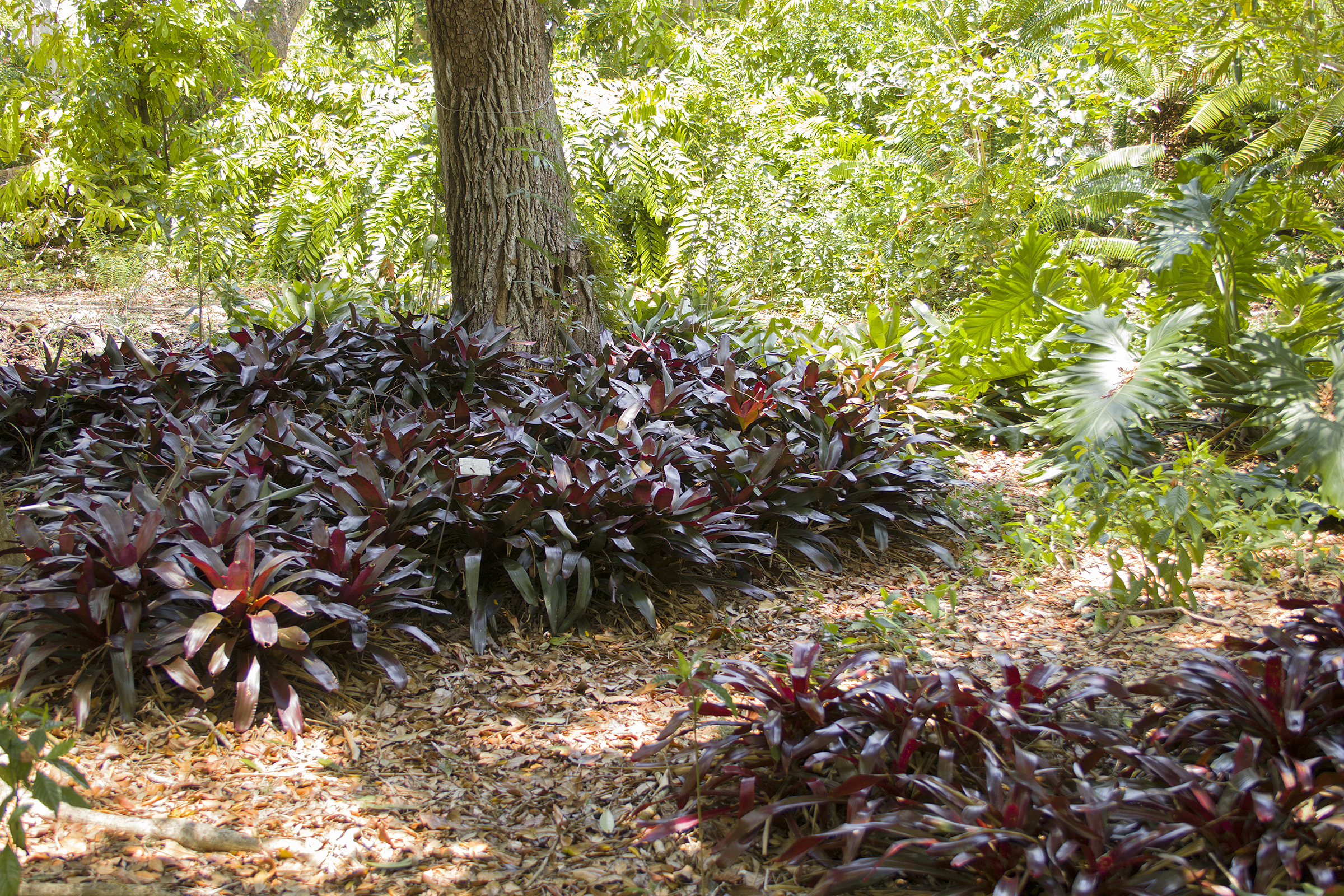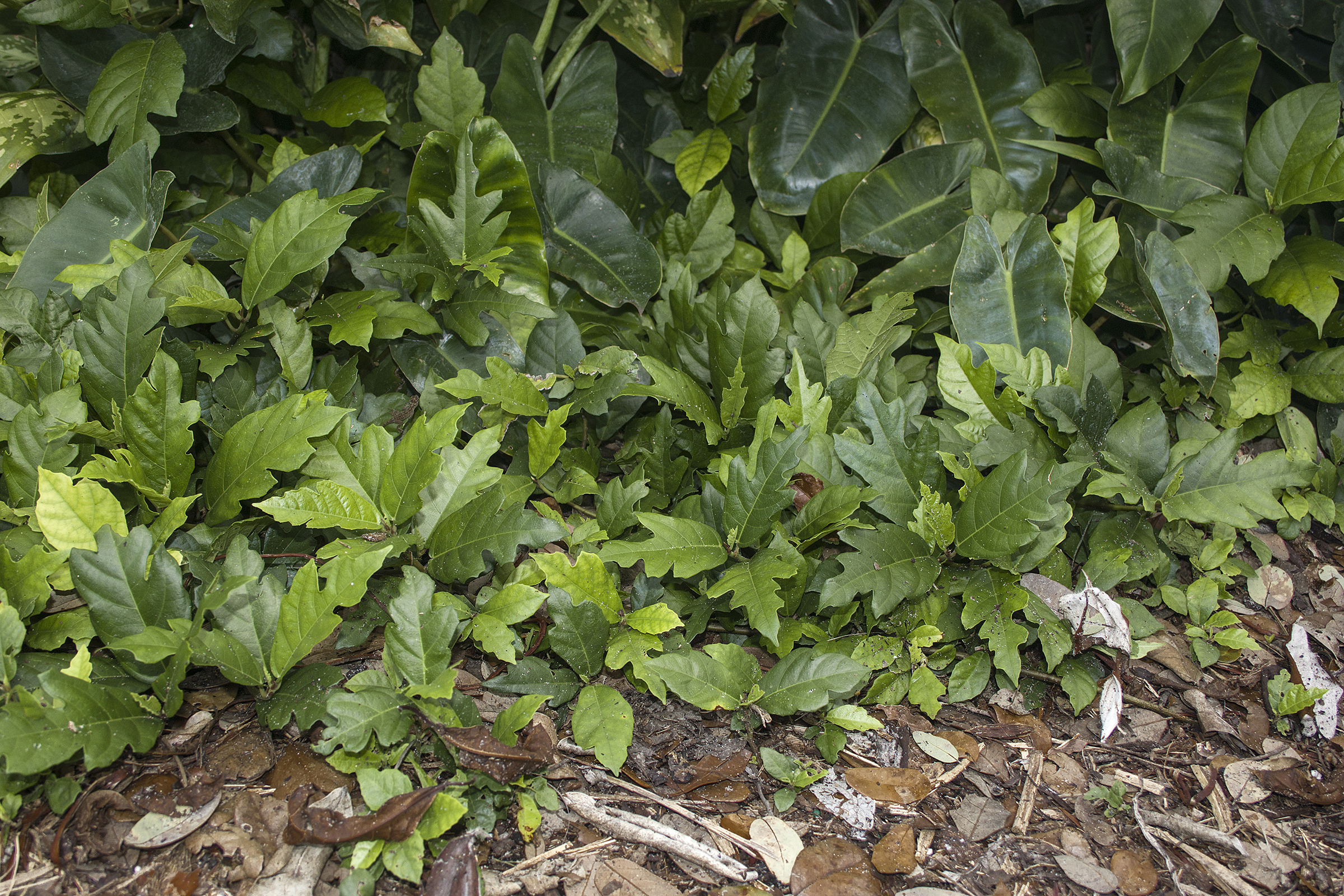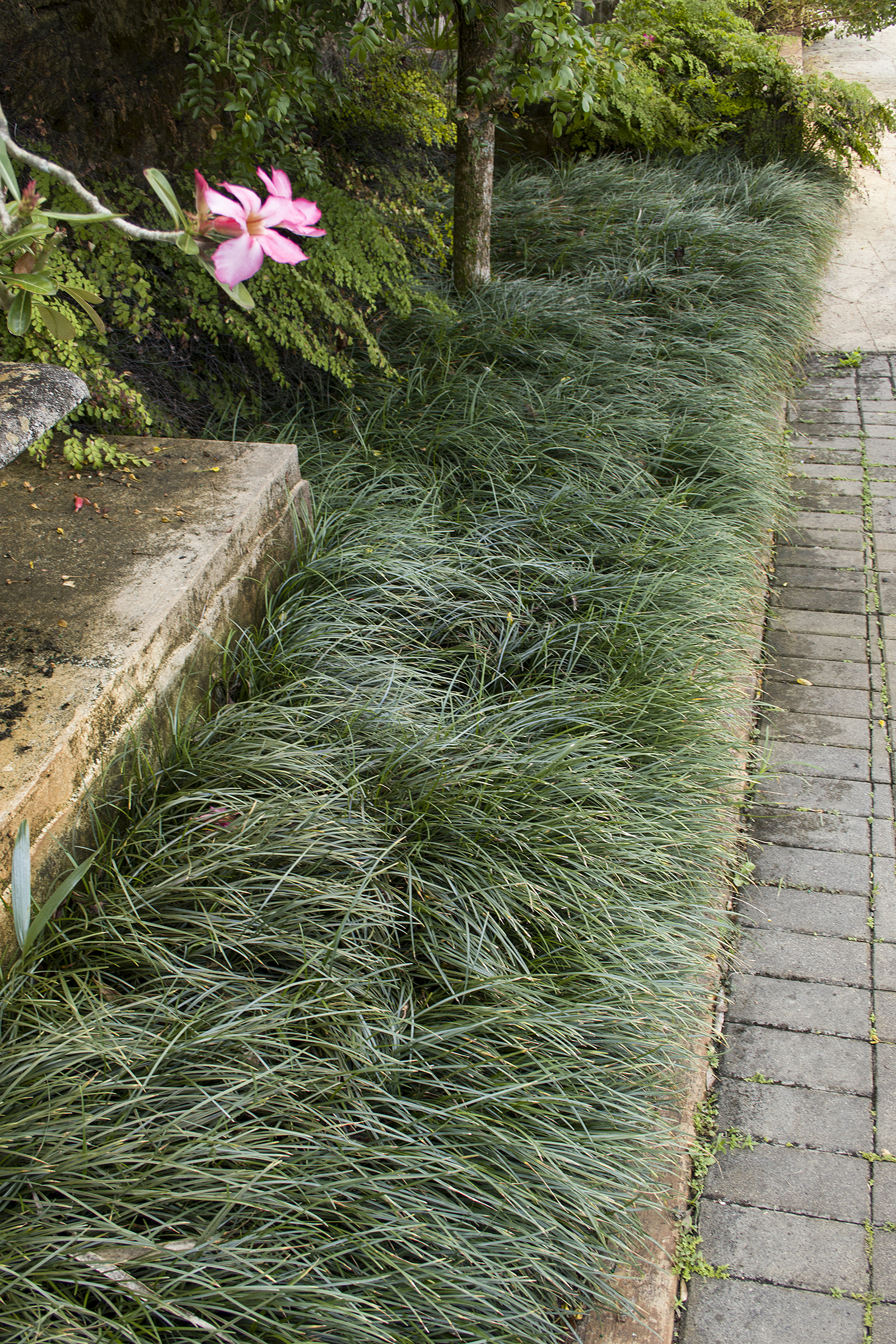Effective, easy South Florida groundcovers

BY KENNETH SETZER
Fairchild Tropical Botanic Garden
As published in the Miami Herald, May 24, 2018
Finding the right plants for groundcover is tricky. At its most basic, groundcover needs to block enough of the bare soil to discourage weeds, while simultaneously requiring minimal maintenance. The cover should spread to create a mat, but not become invasive. If it flowers or becomes a focal point, so much the better.
Groundcovers are often also subject to the least hospitable yard areas and may have to tolerate trampling if they are in areas of foot traffic, midday sun, and roof runoff from storms. Here are some favorites and possibly some new groundcovers to consider.
Rain lilies (Zephyranthes sp.)
I once found some dark green grass-like leaves in a pot containing a large cactus. Upon learning it was a rain lily and grew from a bulb, I dug it up and gave it its own pot. It’s since reproduced to hundreds of plants all from that single bulb. The flowers appear in late spring and are spectacular, but otherwise the foliage looks like a small fountain of grass. My friend uses them as fill and groundcover which made me realize they can be set free from a pot. I’ve since planted the bulbs in open areas and along walkways.

Rain lilies can form showy, flowering groundcover.
Downside: Like many plants growing from bulbs, it survives lean times by seeming to disappear, storing energy in its underground bulb, but it always comes back; in cultivation the foliage tends to endure longer with irrigation. For a large expanse, rain lilies might not offer the best consistent coverage but make attractive, unexpected edging plants.
Bromeliads
You might not consider bromeliads for groundcover, but they form the ideal low mat required. Fairchild has lots of dense bromeliad groupings, and I’ve seen bromeliads create a groundcover in my own yard without my encouragement. The thick-leaved varieties that like full sun can be planted every two feet or so apart, and will eventually spread via the pups that form at the mother plant’s base. After flowering bromeliads die, but this can take a long time. A downside is reaching between the spikey-leaved varieties to remove dead foliage. Wear gloves.

Some bromeliads form thickets that block out weeds.
Formosan creeping fig, Ficus vaccinioides
How amazing that the genus Ficus offers plants from enormous trees (the champion strangler fig grows right here in Miami) right down to this scrambling groundcover with tiny, deep green leaves, smaller than those of Ficus pumila; its figs look like tiny blueberries. An interesting, unexpected cover for smaller areas where the tiny foliage won’t get lost to view.
Another one, Ficus montana or oak leaf ficus, also hugs the ground as it creeps along and spreads to form a mat. Remarkably, it prefers shade. It’s a challenge to find a shade-loving plant that won’t sizzle in unexpected sun exposure like a vampire, but oak leaf ficus scrambles into direct sun along paths at Fairchild, and thrives. In poking around a colony of it to take photos for this article, I discovered it had produced the most charming tiny figs. Both Ficus species stay very close to the ground.

Oak leaf ficus spreads low to the ground.
Florida gamagrass or Fakahatchee grass (Tripsacum floridanum) is tall for a groundcover at 2 to 3 feet high, but makes an excellent native edging and accent plant for sunny areas that need to be filled. It can be cut to the ground to encourage new growth after cold spells, but for the most part is evergreen in the sub-tropics. A dwarf version is also available.
The closely related Tripsacum dactyloides, eastern gamagrass, takes a similar form and may be a bit taller than Florida gamagrass, and prefers damper conditions.
If you live near the coast where salt exposure is a concern, consider Helianthus debilis, aka beach sunflower. It may not form a dense cover, but the flowers are worth it. Beach sunflower loves nutrient-poor, sandy soil.
Liriope muscari is an old favorite; at Fairchild, there are three varieties, including a variegated version. Liriope sports a small fountain of dark green blades and flowers in a purple spike. Its leaves even take on a metallic sheen to my eye. But I’m not telling you anything new; it can be found everywhere from private homes to mall parking lot islands and medians. Its ease of cultivation is a factor in its ubiquitousness, making it inexpensive for covering large areas.

Popular, low-maintenance liriope fills a space and will occasionally flower.
